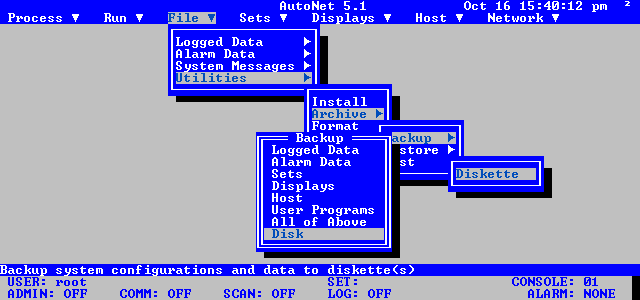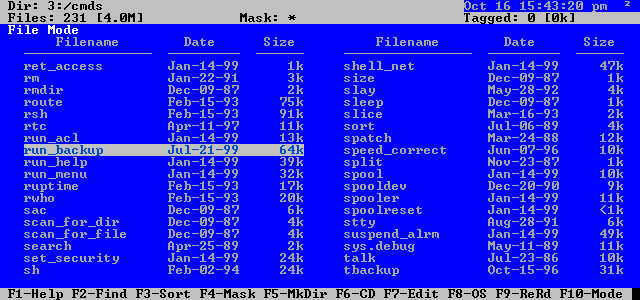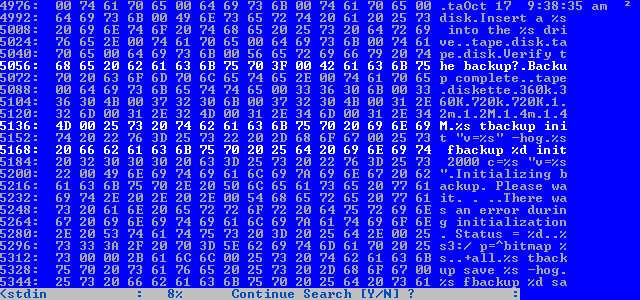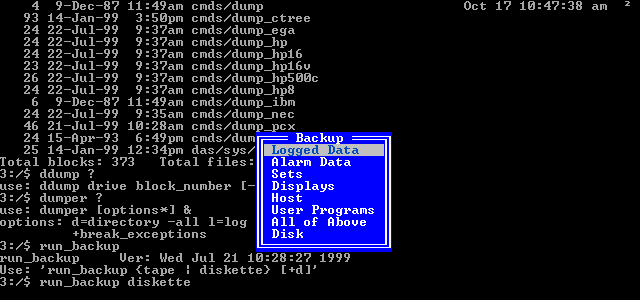(this is a bit of a read but I feel it necessary to explain the situation)
The software we use creates multiple, disparate configuration files in many different locations. I have to maintain backups of these files for ~20 machines, and the only means that the software offers is via tape or floppy, and we don’t use tapes. This is a pretty big undertaking and I am trying to improve/streamline our process because it’s all on me and I know there has to be a better way.
With @maschoen 's recent guidance, I have managed to successfully and confidently navigate drive mounting/formatting/booting and the process of making a full drive copy with the backup command.
This serves as a good first step for recovery, but I am now trying to parse and understand some of the other file backup tools that QNX and this software have.
The software has its own functions that utilize the QNX backup, tbackup, and fbackup utilities… it will prompt the user for the requisite info (ie; category, archive name, size of disk, etc) and then go about its business without the need of further user input… except for media interaction.
The backups we need to make routinely span 10-20 floppies and takes So Long to work through because it automatically formats each disk before writing, and then also verifies each disk afterward. This is great for making a comprehensive backup of necessary configuration components, but it offers no ability to choose a location/directory, nor a hard drive.
If I use the dump |more string, I am able to see the hex data of these programs, and I can see parts of the different [t/f]backup command strings and input arguments in plaintext as I scroll through the data.
I was hoping I could load the program into ed or bed to maybe change which command it uses and still have the prompts for input and automation, but it is only a text editor, and doesn’t seem to “see” or report that same text I saw in the ascii column of the hex dump.
- IS there even any way for me to edit these programs?
- Is there any hex editor that might make the ascii text easier to read/parse?
- Is there a way to sort of “log” what command strings are being executed in the shell? Like maybe seeing what the final output is from the software’s little front-end when it uses the fbackup command? Maybe I could just see how it implements some of these functions so I know what directories, files, filters, arguments, etc it ends up using…
These curated backups are important because they allow for data to be imported into a fresh installation in the event that something corrupts anything on the drive which may unknowingly be preserved during the complete drive backup process. They are also the easiest way to corral all the files rather than trying to fish around and save them all individually.
Even if I can’t edit the program components within the software, if I could interpret what it’s doing, I imagine the same effect could be achieved with a script written around maybe the backup command so I could specify a hard disk destination…
For some context, here are a few text screen-caps that I colored and cropped as images; the function being accessed from the software’s main screen, the program in the file list, a hex dump of me searching the string “backup”, and the same program being loaded from the shell.



